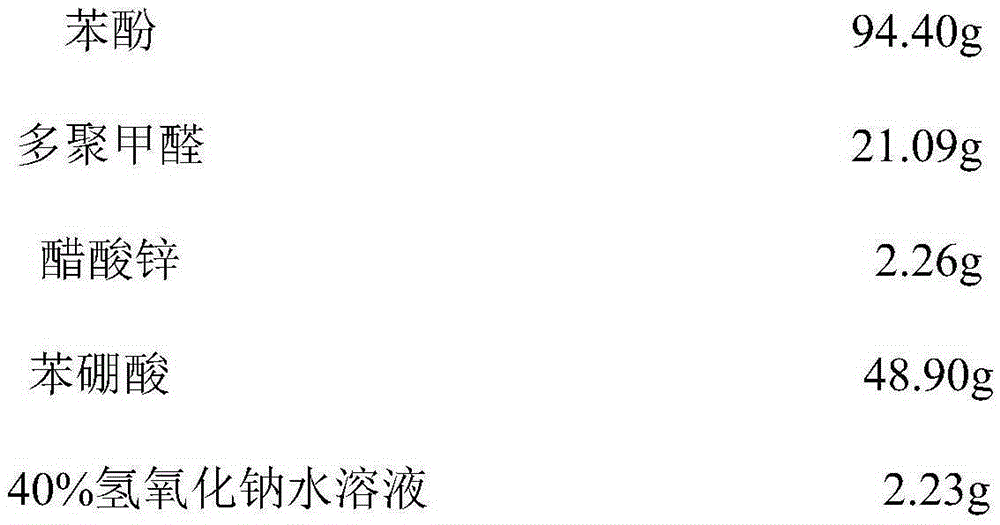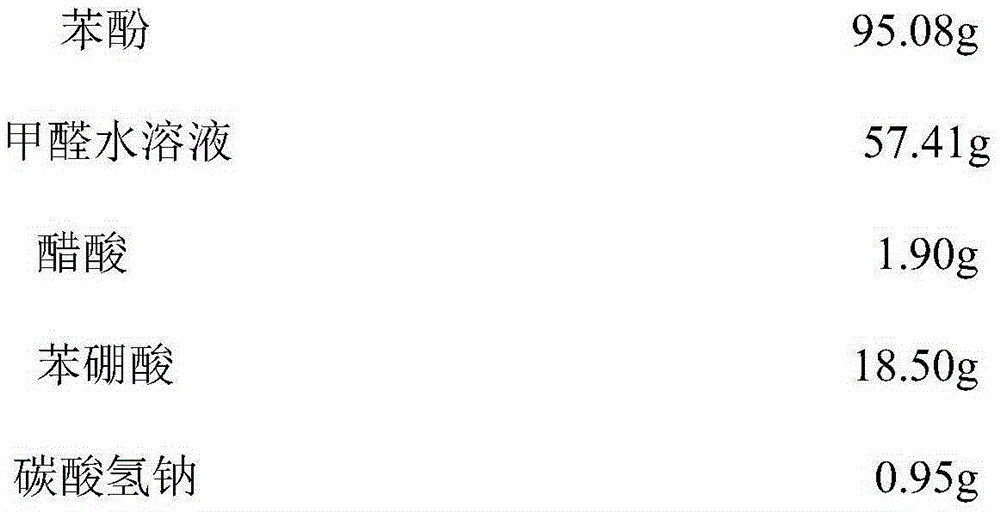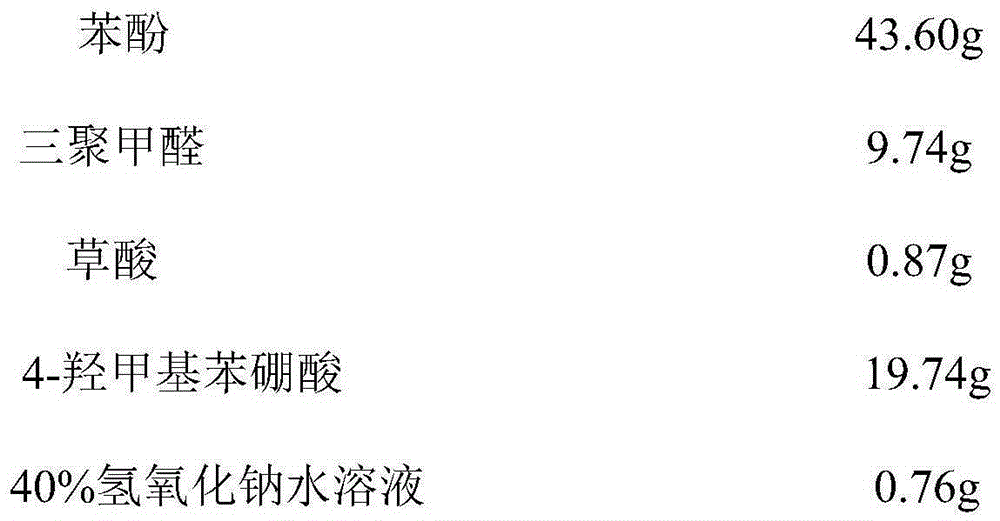Preparing method for ablation-resisting boron-modified thermoplastic phenolic resin
A phenolic resin and boron modification technology, which is applied in the field of phenolic resin preparation, can solve the problems of increased production cost, low product reliability and high curing temperature, and achieves low volatile content, good ablation performance and mechanical properties, high Effect of carbon residue rate
- Summary
- Abstract
- Description
- Claims
- Application Information
AI Technical Summary
Problems solved by technology
Method used
Image
Examples
Embodiment 1
[0023] raw material:
[0024]
[0025] Process:
[0026] Pre-raise the temperature of the oil bath to 80°C, add phenol and zinc acetate in sequence, keep stirring for 5-10 minutes to make the mixture even, and then add a certain amount of paraformaldehyde. The temperature of the oil bath was raised to 100°C, and the reaction was carried out for 8-12 hours. Then add sodium hydroxide aqueous solution to make the mixture uniform, then slowly add phenylboronic acid and then raise the temperature to 140°C, and react for 2h. Raise the temperature to 150°C, carry out dehydration under reduced pressure, and last for about 20 minutes at -0.06~-0.09MPa, and determine the reaction end point according to the viscosity of the tree. A yellow or reddish-brown solid resin is finally obtained.
[0027] The performance index of the prepared resin:
[0028] Cured resin carbon residue rate (800 ° C, nitrogen atmosphere): 69% to 71%
[0029] Softening point: 98~103℃
[0030] Free phenol: ...
Embodiment 2
[0033] raw material:
[0034]
[0035] Process:
[0036] Pre-raise the temperature of the oil bath to 80°C, add phenol and acetic acid in sequence, keep stirring for 5-10 minutes to make the mixture even, and then add a certain amount of formaldehyde aqueous solution. The temperature of the oil bath was raised to 100°C, and the reaction was carried out for 8-12 hours. Then phosphoric acid was added to make the mixture uniform, and then phenylboronic acid was added slowly, and the reaction was 3h. Lower the temperature to 80°C, rinse the solution with distilled water, then raise the temperature to 100°C, and carry out dehydration condensation under reduced pressure, at -0.06~-0.09MPa for about 45min, and determine the reaction end point according to the tree viscosity. A reddish-brown solid resin was finally obtained.
[0037] The performance index of the prepared resin:
[0038] Cured resin carbon residue rate (800°C, nitrogen atmosphere): 64% to 66%
[0039] Softening...
Embodiment 3
[0043]
[0044] Process:
[0045] Pre-raise the temperature of the oil bath to 80°C, add phenol and oxalic acid in sequence, keep stirring for 5-10 minutes to make the mixture even, and then add a certain amount of paraformaldehyde. Raise the temperature of the oil bath to 100°C, carry out the reaction for 8-12 hours, and distill under reduced pressure to remove part of the water and small molecule volatiles. Then add sodium hydroxide aqueous solution to mix evenly, then slowly add 4-hydroxymethylbenzeneboronic acid and then heat up to 150°C, after 2 hours of reaction, carry out dehydration under reduced pressure, at -0.06~-0.09MPa for about 10min, specifically determined according to the viscosity of the tree end point of the reaction. A brown or reddish-brown solid resin is finally obtained.
[0046] The performance index of the prepared resin:
[0047] Cured resin carbon residue rate (800°C, nitrogen atmosphere): 66% to 68%
[0048] Softening point: 90~95℃
[0049] ...
PUM
| Property | Measurement | Unit |
|---|---|---|
| softening point | aaaaa | aaaaa |
| softening point | aaaaa | aaaaa |
| softening point | aaaaa | aaaaa |
Abstract
Description
Claims
Application Information
 Login to View More
Login to View More - R&D
- Intellectual Property
- Life Sciences
- Materials
- Tech Scout
- Unparalleled Data Quality
- Higher Quality Content
- 60% Fewer Hallucinations
Browse by: Latest US Patents, China's latest patents, Technical Efficacy Thesaurus, Application Domain, Technology Topic, Popular Technical Reports.
© 2025 PatSnap. All rights reserved.Legal|Privacy policy|Modern Slavery Act Transparency Statement|Sitemap|About US| Contact US: help@patsnap.com



